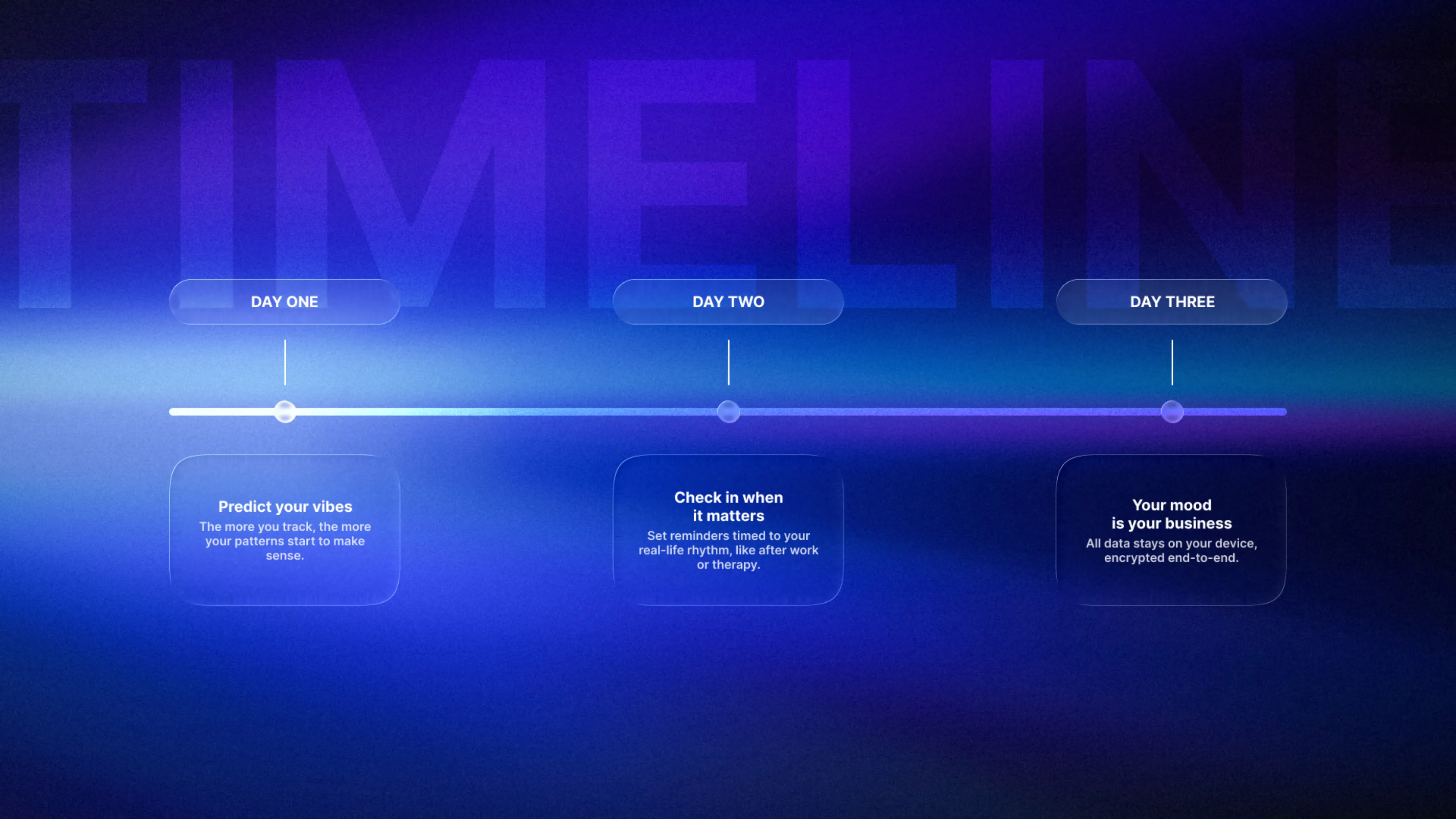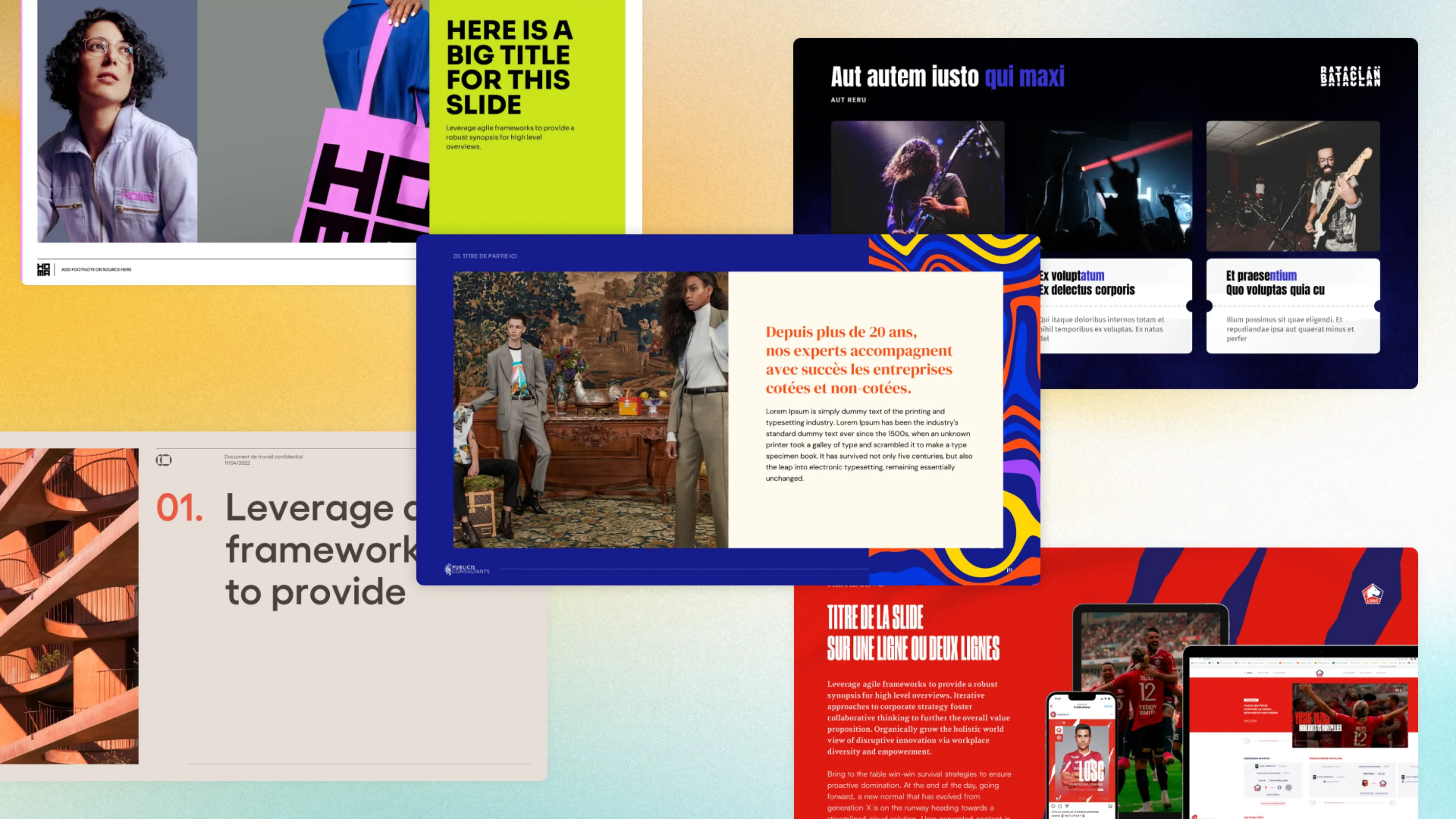.svg)
How to create a timeline in PowerPoint
A timeline in PowerPoint is a line chart that shows a sequence of events, milestones, or steps in a temporal order. It allows you to visualize the evolution of a project, the history of a company or the progress of a process. PowerPoint offers several ways to create these borders, from built-in SmartArt tools to customizable templates.
Author
Jérôme Bestel
Updated on
November 14, 2025
Created on
November 5, 2025
Category
Tutorials


Join the thousands of businesses and executives who have trusted Slidor to turn their slides into high-impact presentations.



Definition of Timeline
A well-designed timeline transforms complex temporal data into an instantly understandable visual. Each effective timeline relies on structural elements: the guideline (main axis), temporal markers (precise dates), milestones (major events), and descriptions (explanatory text).

💡 Key Point: Add a legend to clarify the meaning of color codes and symbols used in your timeline.
Essential Timeline Types
| Type | When to use it | Main advantage |
|---|---|---|
| Horizontal | Landscape presentations, 5-8 events | Follows natural reading direction |
| Vertical | Portrait formats, 10+ events | Saves horizontal space |
| Circular | Recurring cycles, iterative processes | Shows endless continuity |
| With arrows | Roadmaps, dynamic progressions | Suggests movement and advancement |
📋 Quick Summary: Choose horizontal for standard landscape slides, vertical for dense timelines, and circular for repetitive cycles (agile sprints, product cycles).
Creation Methods in PowerPoint
PowerPoint offers three main approaches depending on your expertise level and available time. If you're looking for professional PowerPoint templates, our agency offers custom template creation services.
Quick Creation with SmartArt
SmartArt graphics are the fastest method to create a professional timeline in less than 5 minutes.
Creation steps:
1. Insert > SmartArt in the PowerPoint ribbon
2. Select Process in the left pane
3. Choose an appropriate timeline template
4. Enter events in the text pane (each line becomes an element)
5. Customize colors with SmartArt Tools > Change Colors
💡 Key Point: SmartArt automatically adjusts size and spacing when you add or remove events, ensuring a balanced layout without manual intervention.
SmartArt advantages:
| Advantage | Practical impact |
|---|---|
| Speed | Creation in less than 5 minutes |
| Consistency | Professional design guaranteed with themes |
| Adaptability | Automatic resizing |
| Conversion | Transform into shapes for advanced customization |
Custom Manual Creation

The manual method offers total control for unique designs but requires 20-30 minutes.
Construction steps:
1. Insert > Shapes > Lines - Draw the main line
2. Add markers - Place circles or squares at event points
3. Insert text boxes - Dates under each marker, descriptions above
4. Align precisely - View > Gridlines and guides for exact positioning
5. Group elements (Ctrl+G) - Facilitates global movement
⚠️ Warning: Use Format > Arrange > Align to evenly distribute elements and ensure a professional result.
Precision techniques:
- Consistent duplication: Create a perfect marker, then duplicate it (Ctrl+D) for uniformity
- Dynamic connectors: Prefer connectors over simple lines for automatic adjustment when moving elements
SmartArt Tools for Timelines
PowerPoint offers several SmartArt graphics specifically optimized for timelines.
Recommended SmartArt Templates
Basic Process:
- Standard horizontal layout, 5-8 events
- Uniform automatic spacing
- Ideal for simple histories
Chevron Arrows:
- Dynamic progression effect
- 3-6 main steps
- Perfect for product roadmaps
Circular Process:
- Recurring cycles, 4-6 events
- Suitable for agile methodologies
- Shows endless continuity
💡 Key Point: To add a SmartArt event, place the cursor at the end of a line in the text pane and press Enter. A new element appears automatically.
Quick customization:
| Action | Path | Result |
|---|---|---|
| Change colors | SmartArt Tools > Change Colors | Harmonized palettes |
| Add hierarchy | Text pane > Demote | Visual sub-events |
| Apply 3D effects | SmartArt Tools > SmartArt Styles | Depth and dimension |
Effective Customization
Customization transforms a generic timeline into a communication tool aligned with your visual identity.
Color Modification
Quick approach:
SmartArt Tools > Change Colors for predefined palettes.
Custom approach:
Right-click on SmartArt > Convert to Shapes, then modify each element with your exact corporate colors. To create reusable templates with your graphic charter, check our guide on PowerPoint template creation.
Color strategies:
| Approach | When to use it | Perceived effect |
|---|---|---|
| Monochrome gradient | Unified timeline | Continuity, cohesion |
| Multi-colors | Distinct phases | Clear differentiation |
| Three-color code | Status (planned/in progress/completed) | Progress tracking |
💡 Key Point: To apply the exact colors from your brand guidelines, convert the SmartArt to shapes for complete individual control.
Adding and Prioritizing Events
Adding methods in SmartArt:
1. Via text pane: cursor after event + Enter
2. Via context menu: Right-click > Add Shape > Before/After
3. Via ribbon: SmartArt Tools > Add Shape
Distinguishing major milestones:
- Increase shape size (150%)
- Apply a distinctive contrasting color
- Add a specific icon (star, flag)
⚠️ Warning: More than 8-10 events on a horizontal timeline compromises readability. Then consider a vertical or multi-line format.
Professional Use Cases
Project Planning and Roadmap

Essential elements to include:
- Main phases: Initiation, planning, execution, closure
- Critical milestones: Validation points, go/no-go decisions
- Major deliverables: Prototypes, reports, deployments
| Project type | Time scale | Optimal format |
|---|---|---|
| Agile sprint | 2-4 weeks | Horizontal with swim lanes |
| Product deployment | 3-6 months | Chevron arrows |
| Transformation | 12-36 months | Multi-phase with breaks |
💡 Key Point: Product roadmaps focus on features and user benefits, not on technical implementation tasks.
Company History
Typical events:
- Founding and first products
- Funding rounds and acquisitions
- Flagship product launches
- Geographic expansions
- Significant awards
Memorable design:
- Period photographs above major milestones
- Color codes by era (one color per decade)
- Parallel with external context for older companies
- Subtle animations to progressively reveal the timeline (discover how to create impactful animations)
📋 Quick Summary: For long histories (50+ years), favor decades as main units with zoom on recent periods.
Product Evolution
Typical structure:
1. Initial version (MVP): Minimal features
2. Iterative versions: Additions based on user feedback
3. Major versions: Redesigns or strategic pivots
4. Future roadmap: Vision ahead
⚠️ Warning: Visually distinguish launched versions (solid colors) and future versions (transparent or dotted) to avoid confusion.
Design Best Practices
Readability Rules
Optimal typography:
- Minimum size: 18pt titles, 14pt descriptions
- Maximum 2 font families
- Text/background contrast: minimum 4.5:1 ratio
- Limit to 8-10 words per event
💡 Key Point: Test your timeline in Slideshow mode on the actual presentation equipment to verify readability from a distance.
Readability optimization:
| Problem | Solution | Result |
|---|---|---|
| Text too dense | Limit to 8-10 words | Quick scan facilitated |
| Illegible dates | Short format (01/2025) + bold | Instant identification |
| Visual overload | Minimum 20px spacing | Visual breathing room |
Information Hierarchy
Visual priority system:
Priority 1 - Critical milestones:
Size +150%, distinctive color, specific icon. Understandable in 3 seconds of quick scan.
Priority 2 - Important events:
Standard size, varied colors, descriptions 5-8 words maximum.
Priority 3 - Additional context:
Size -20%, muted colors, optional italic text.
📋 Quick Summary: Apply the 3-5-7 rule: maximum 3 critical milestones, 5 important events, 7 contextual elements per timeline.
Visual Consistency
Systematic consistency elements:
- Restricted palette: 3-5 colors maximum
- Recurring shapes: same geometry for similar markers
- Harmonized iconography: icon family of the same style
- Uniform date format: consistent MM/YYYY or DD/MM/YYYY
To ensure optimal visual consistency, use PowerPoint slide masters which allow you to standardize all these elements automatically.
⚠️ Warning: Consistency doesn't mean monotony. Vary formats (horizontal, vertical, circular) according to needs while maintaining a recognizable visual family.
Frequently Asked Questions
How to create a PowerPoint timeline quickly?
Use SmartArt: Insert > SmartArt > Process, select a timeline template, then enter your events in the text pane. This approach creates a professional timeline in less than 5 minutes without advanced design skills.
What is the difference between horizontal and vertical timeline?
The horizontal timeline follows Western reading direction (left to right) and suits landscape formats with 5-8 events. The vertical is more effective for portrait formats, long sequences (10+), or limited horizontal space with a natural top-to-bottom descent effect.
How to add precise dates on my timeline?
For SmartArt, enter dates in the text pane before the descriptive text. For manual timelines, insert text boxes under each marker. Use a consistent format (DD/MM/YYYY or MM/YYYY) and bold font for better visibility.
How many events can be placed on a PowerPoint timeline?
Optimal: 5-8 events for classic horizontal, 10-15 for vertical, 4-6 for circular. Beyond that, readability decreases. Then consider a multi-level timeline or divide the timeline across multiple slides by periods.
Conclusion
PowerPoint timelines transform complex temporal data into instantly understandable visuals. Whether you choose SmartArt for speed (5 minutes), manual creation for total customization (20-30 minutes), or ready-to-use templates for optimal compromise, the essential lies in clarity and visual consistency. Apply readability and hierarchy best practices to maximize the impact of your chronological presentations.
If you need help creating professional timelines or perfecting your presentations, our presentation design agency supports companies in designing impactful visual materials.



















